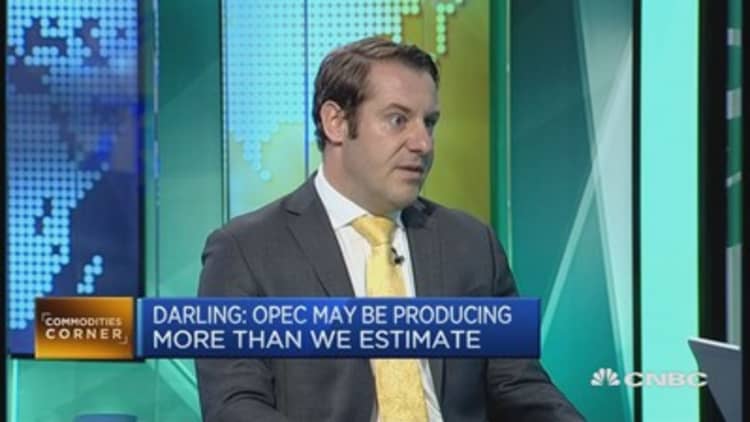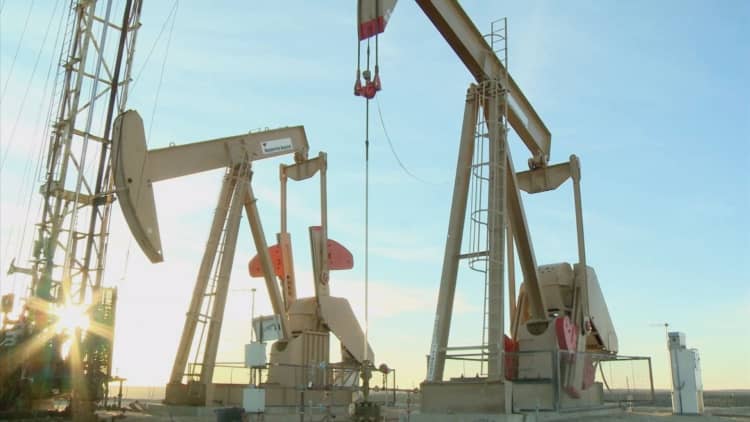
Oil price gains eased on Thursday after U.S. government data showed a seventh straight build in crude stocks, suggesting high inventories could undermine OPEC's move to cut output.
Benchmark Brent crude oil rose 71 cents a barrel, or 1.3 percent, to $56.55 by 2:34 p.m. EDT (1934 GMT) after touching a high of $57.26. U.S. light crude settled up 86 cents, or 1.6 percent, at $54.45 a barrel after touching $54.94 a barrel.
Prices extended gains soon after the inventory data was released, but much of those advances dissipated over the next 30 minutes.
U.S. crude stocks rose 564,000 barrels last week, the seventh consecutive rise, data from the U.S. Energy Information Administration showed on Thursday, although less than previously expected.
Still, at the Cushing, Oklahoma delivery hub, inventories fell by more than 1.5 million barrels, its largest draw since October.

Oil imports fell from the previous week, but the four-week average remains 7.5 percent above the average last year. Gasoline production increased, while distillate fuel output decreased.
U.S. gasoline stocks fell by 2.6 million barrels, and distillate fuel stocks dropped by 4.9 million barrels the most since October 2014, EIA data showed.
Both benchmarks are near the top of relatively narrow $4 ranges that have contained trade so far this year, reflecting a period of low volatility since the Organization of the Petroleum Exporting Countries and other exporters agreed to cut output.
OPEC and producers including Russia aim to reduce production by around 1.8 million barrels per day (bpd) in an attempt to drain an oversupply that has kept prices depressed for more than two years.
But some analysts considered the trading range a growing concern, particularly since high compliance among OPEC members to curb output is having little upside, according to Tariq Zahir, an analyst at Tyche Capital Advisors.
"If someone told me that the OPEC cuts would be well above historic numbers, you would expect prices to be up to $60 or $65 a barrel," he said. "We're at 90 percent (compliance) last month, what if it falls to 80 or 85 percent?"

So far OPEC appears to be sticking to its deal but other producers, notably U.S. shale companies, have increased output, helping swell stocks in the United States, the world's biggest oil consumer.
Tony Nunan, oil risk manager at Mitsubishi Corp in Tokyo, said the market needed to see that stocks outside the United States were also falling for prices to break out of their trading ranges.
"It's a battle between how quick OPEC can cut without shale catching up," Nunan said, referring to U.S. drilling in shale formations that has shown an upsurge this year.
"What OPEC really has to do is get the inventories down."

